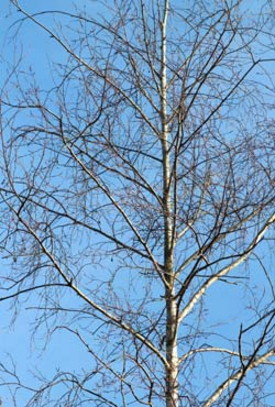Look about you. Winter gives us information in unexpected ways. For instance, you can tell the temperature outside just by looking at the rhododendrons.
At 32 degrees, they curl up. About like a cigar. If they curl even more tightly, like a cigarette, it’s about 20 degrees. Some varieties curl up tighter, some not so tight. But always at 32 degrees. When warm sunshine hits a particular leaf, that leaf uncurls.
The varieties from colder ecosystems, curl more tightly than those that are not as hardy. It’s related to salt concentrations in the sap, and obviously, the freezing point of water.
Another piece of most useful information is to see whether one’s trees are well balanced, and whether certain branches are dead.
First look at the branch structure, which is best visible from a distance. If a huge wind blows up, will the tree waver too much in one direction or another because of uneven weight and possibly fall or crack?
If so, consider calling a certified arborist for an opinion about pruning. Pruning is expensive, but don’t do it yourself because of the serious accidents and death rate.
To tell if a particular branch is dead or alive, look at the end. If there are small branchlets and twigs, it’s probably alive. If there are no little twigs, check it out in spring to see if it leafs out. Dead branches eventually break off in storms and can cause damage. Consider having a professional tree company remove it. (A local Belmont boy was so killed not long ago.)
Winter is a good time to decide how to shape small trees and seedlings, because the branching structure is completely visible. Young trees put out too many small branches, all around, on the sides and top. To get a strong scaffold in the mature tree, it’s necessary to shape it when young. It should have a main central trunk, and some well spaced branches that will grow to become a well balanced tree.
Does this all sound too technical? It is. However, anyone who looks carefully at a tree, slowly and thoughtfully, will learn lots of useful information.
And while you are looking around, see if you can glimpse a coyote pack, or even a wolf, if there are any in your town. Centuries ago, January was known as wolf-month in northern Europe. It’s the mating season and also food is scarce, hence the fairy tales The Three Little Pigs and Little Red Riding Hood. Fortunately the woodsman came, chopped open the wolf’s stomach and rescued Little Red’s grandmother (whole and intact). Today it’s only free roaming cats and dogs near conservation lands that are at risk.




























